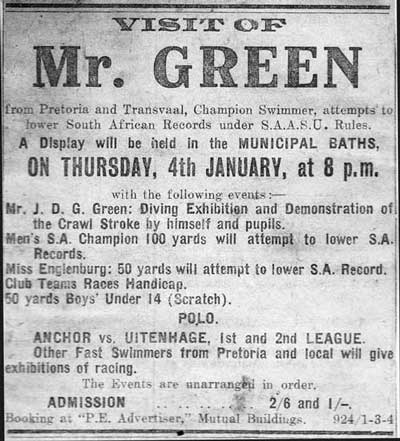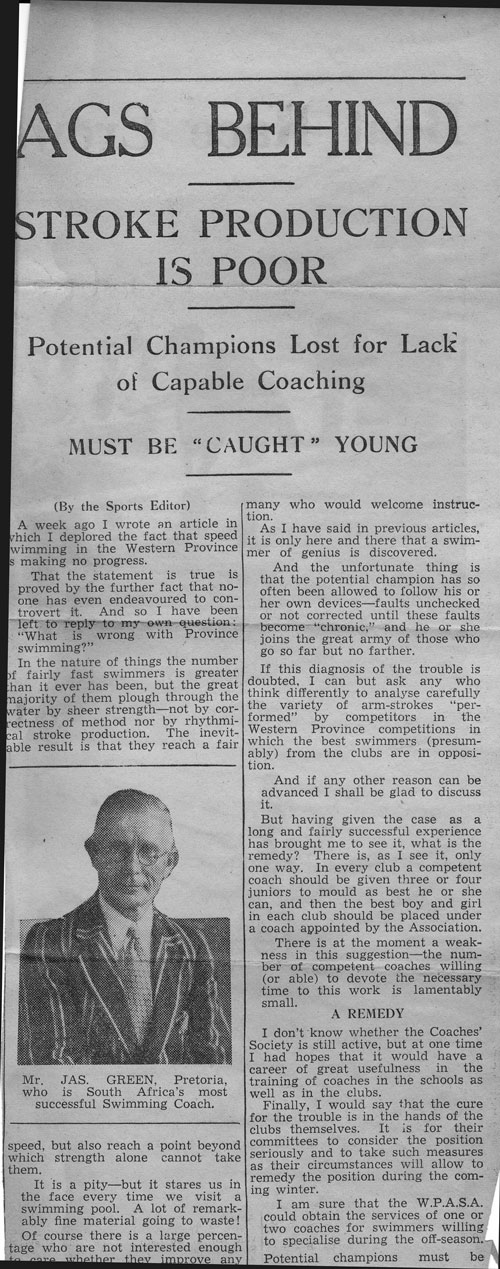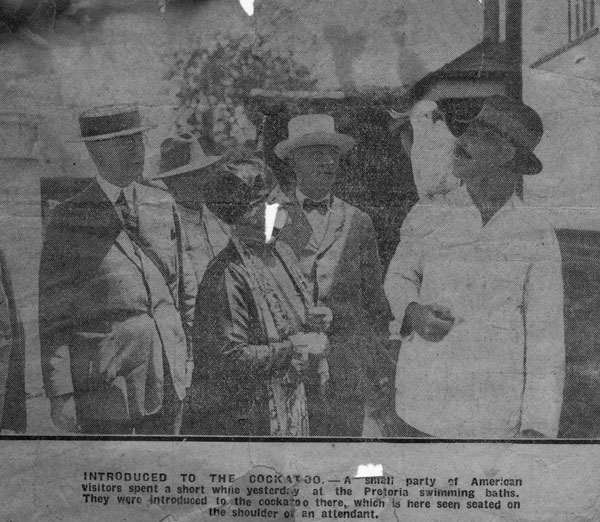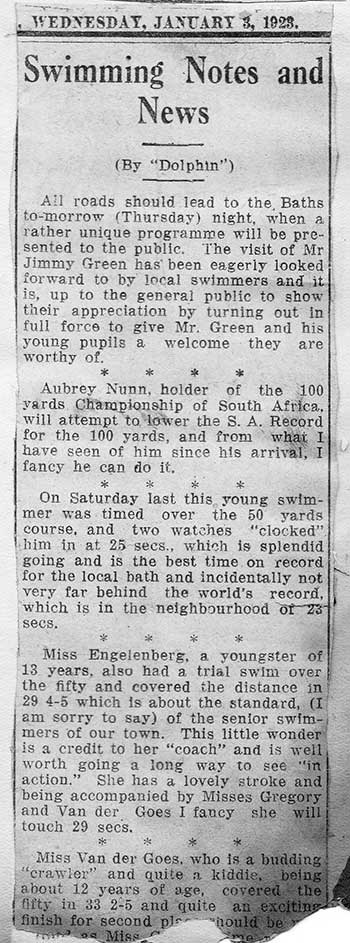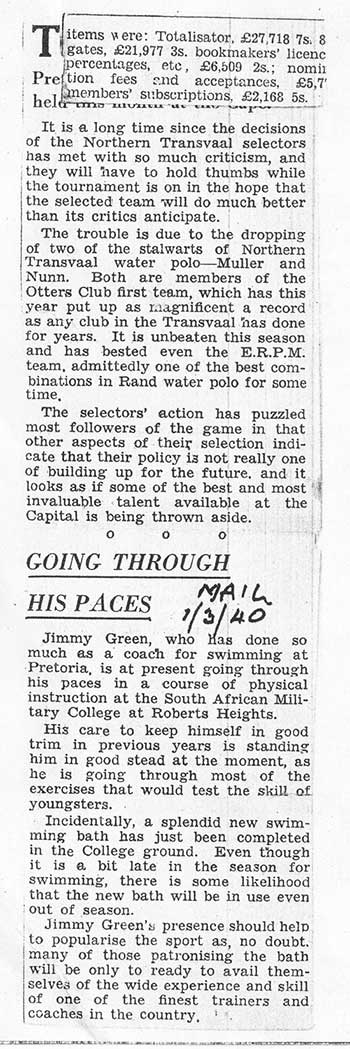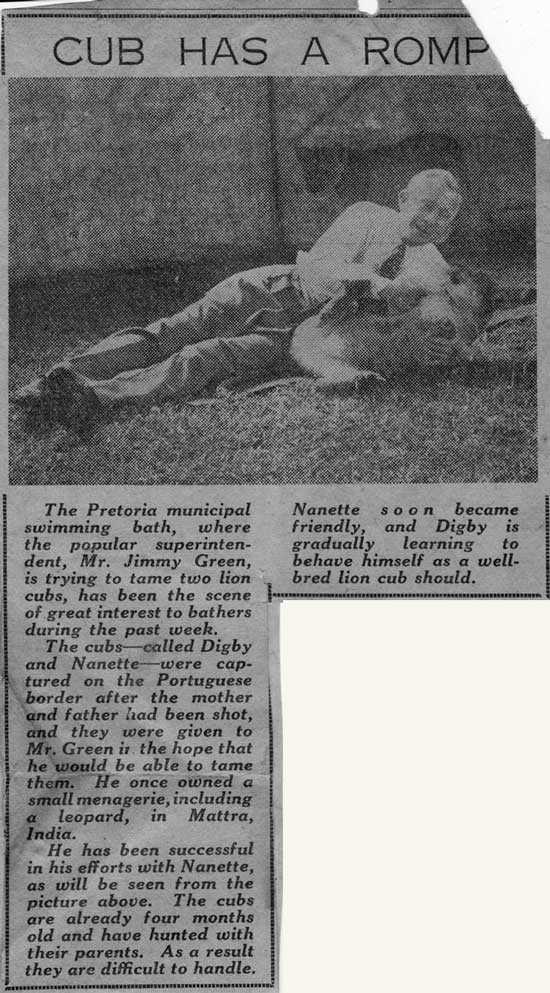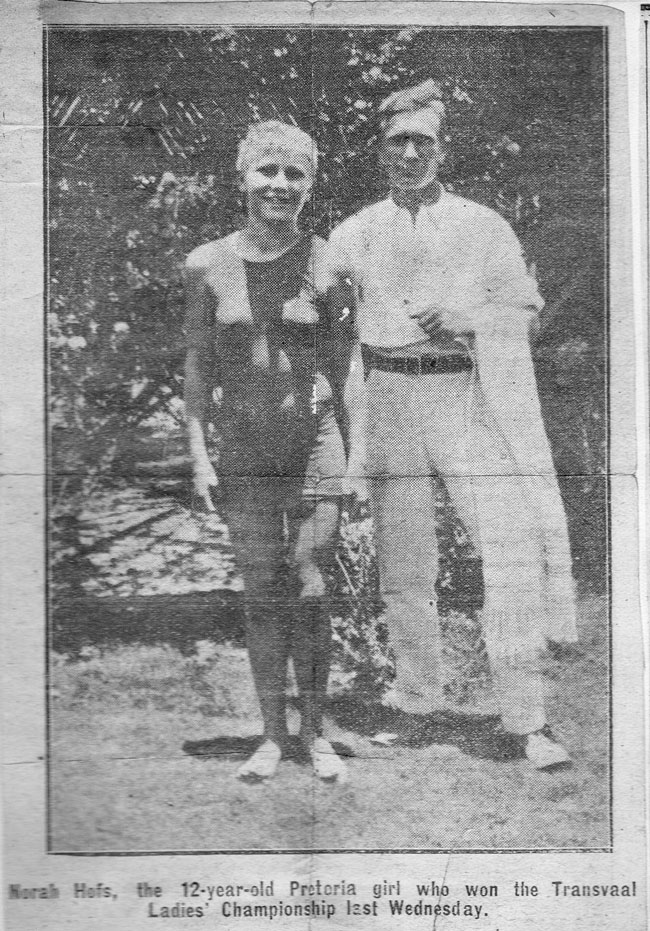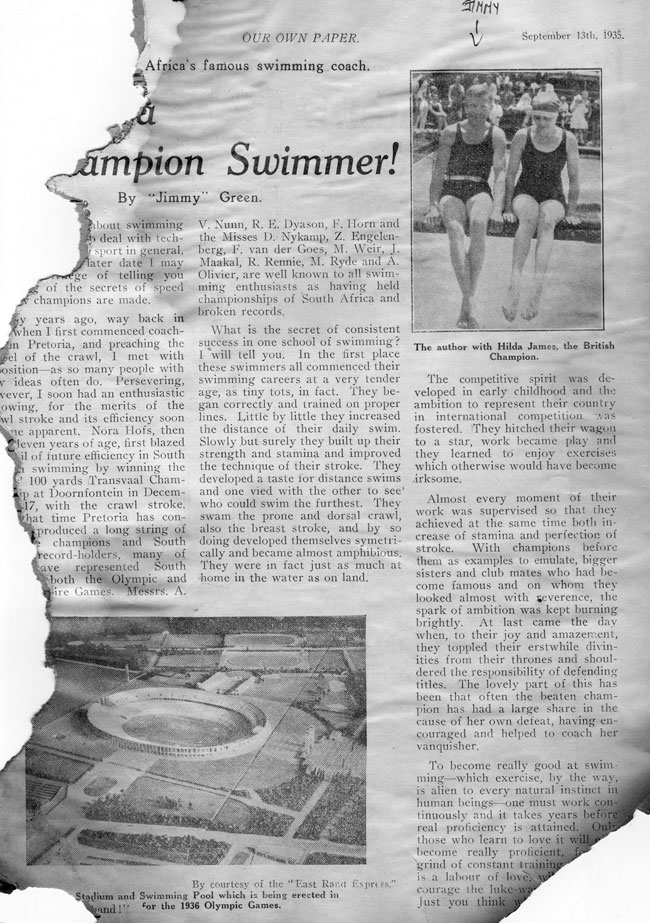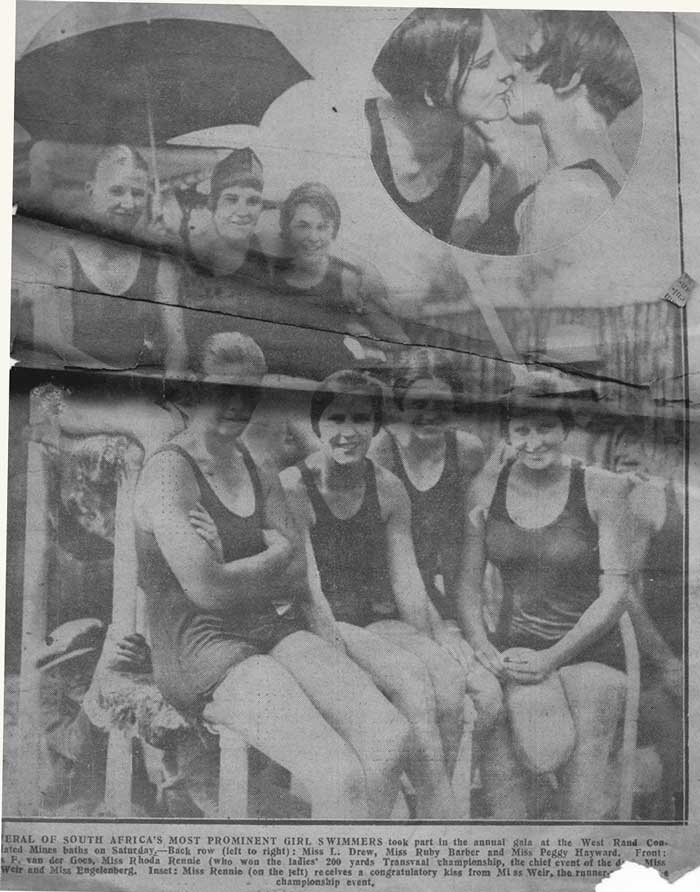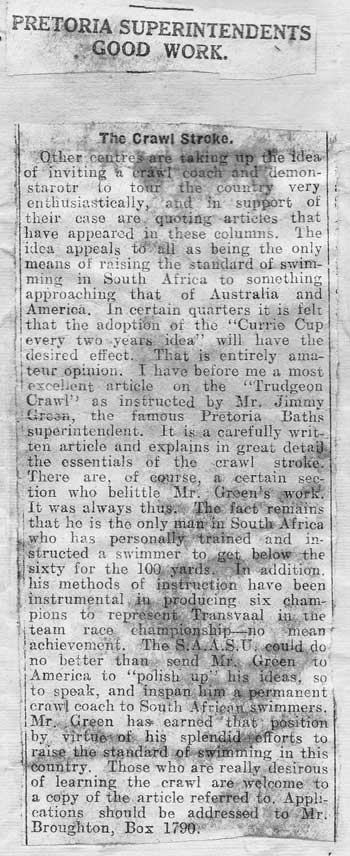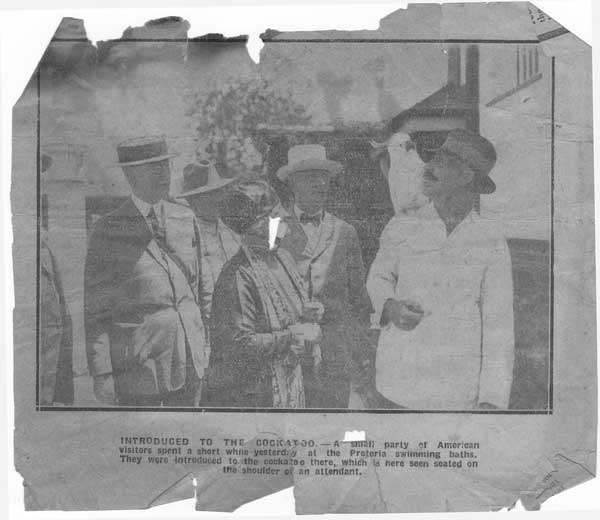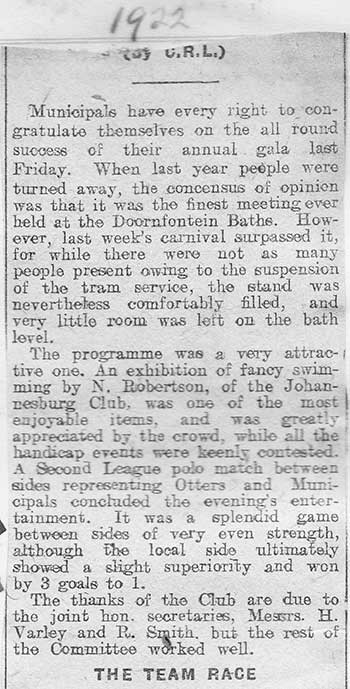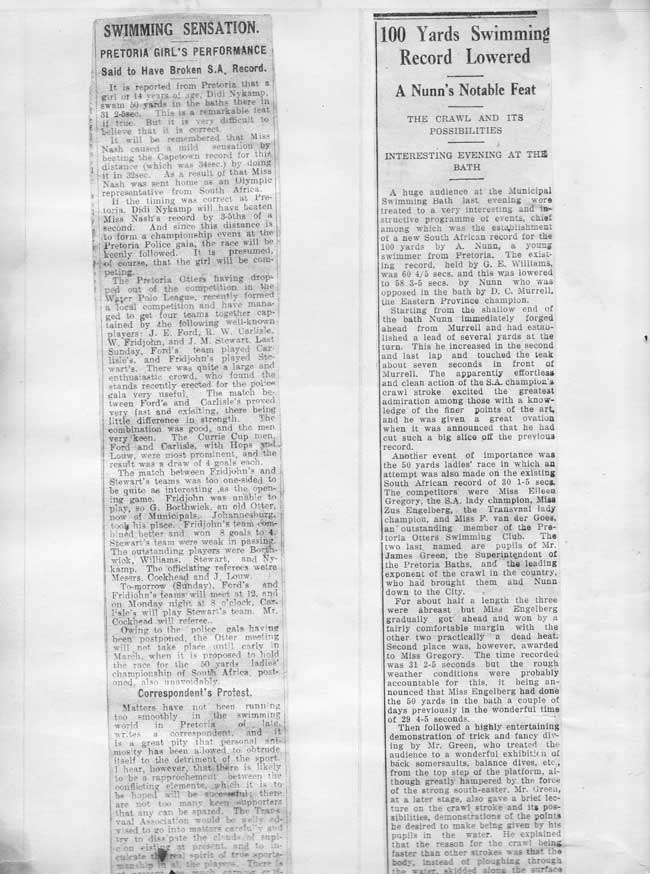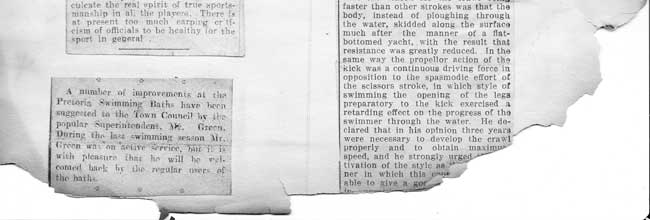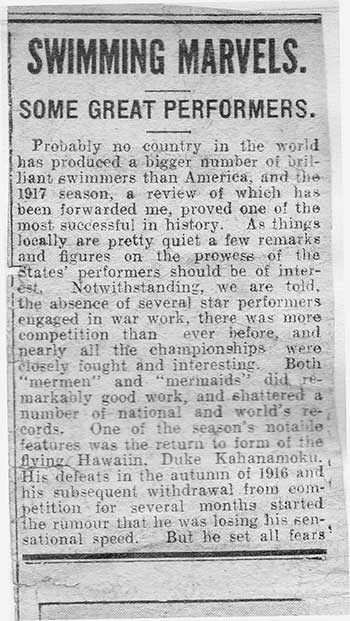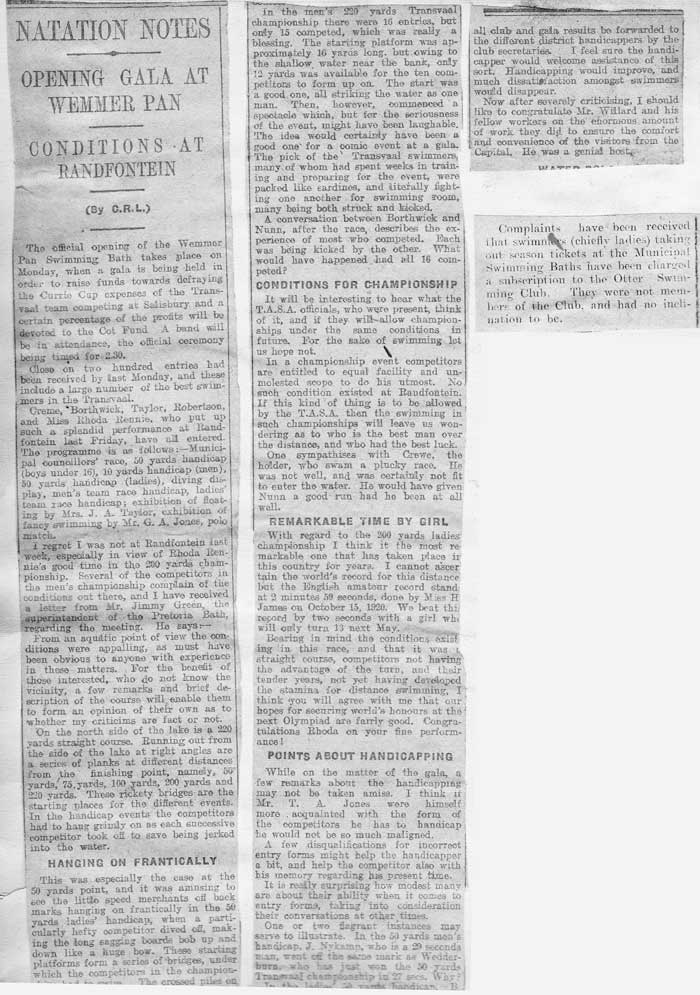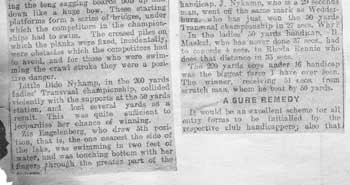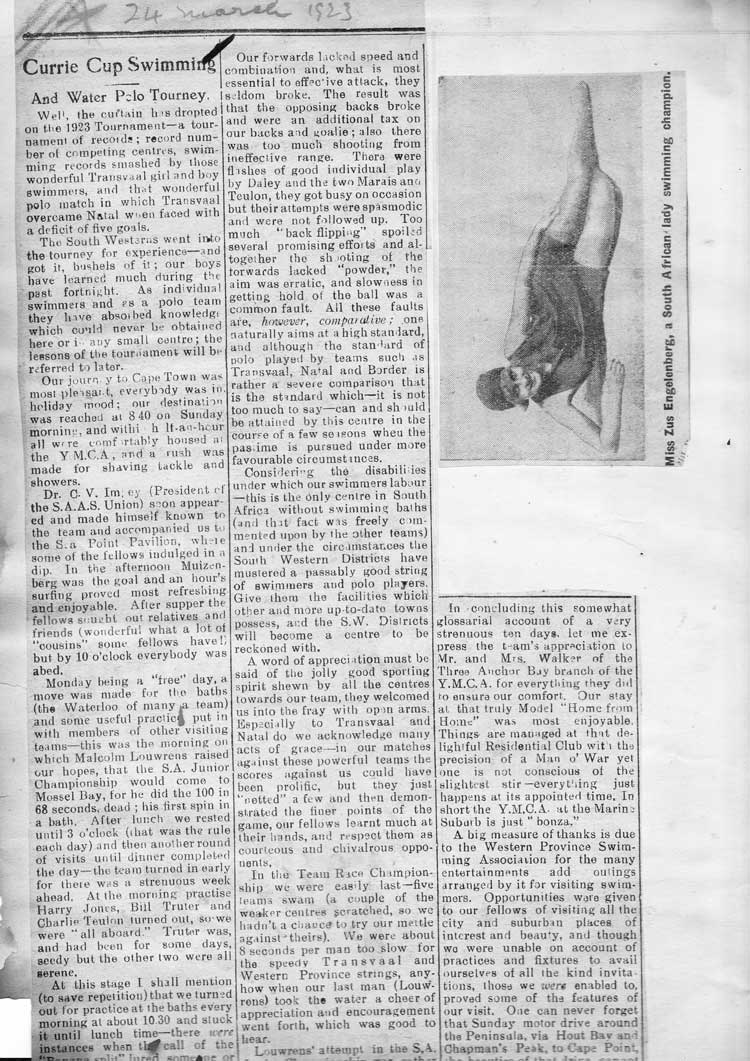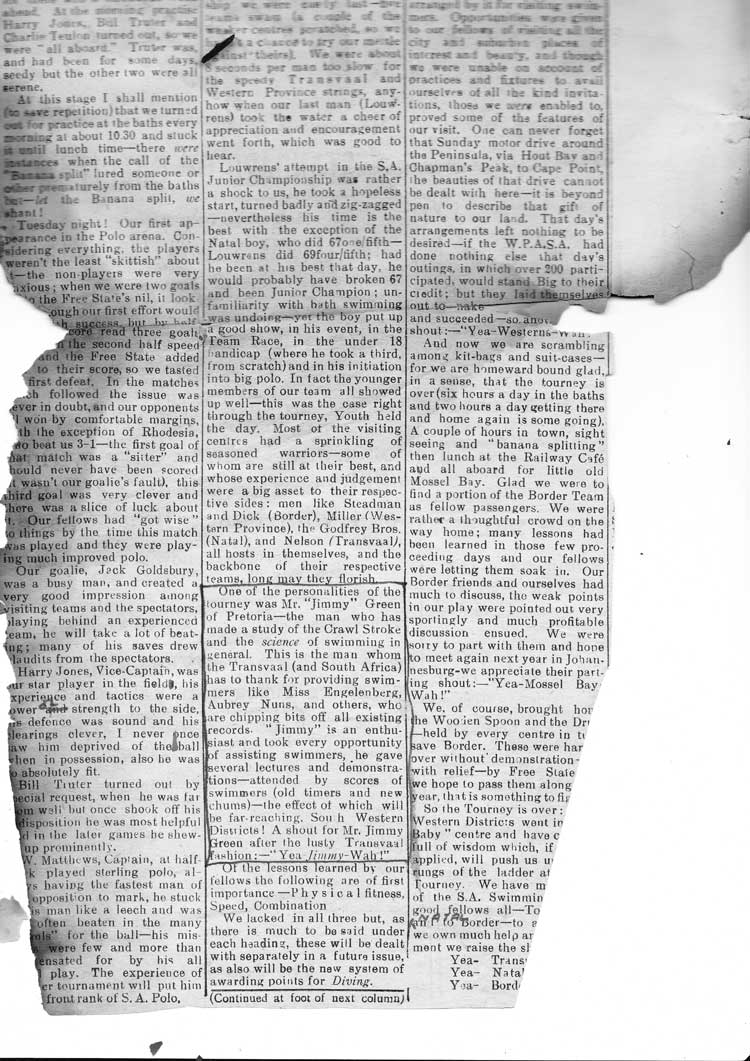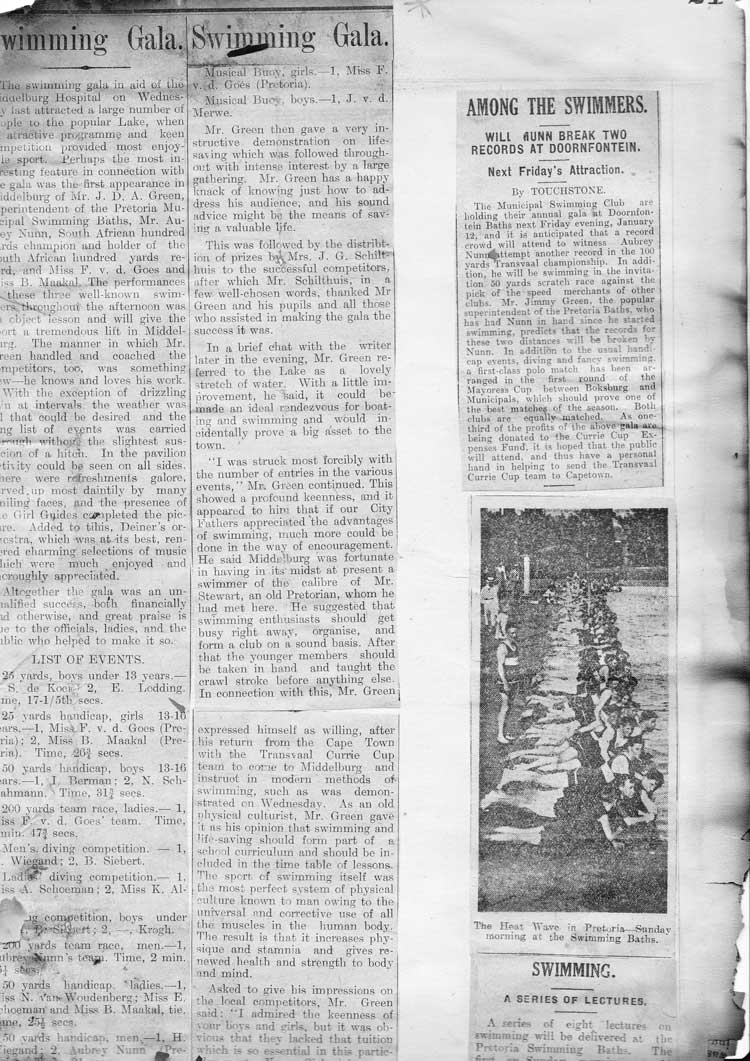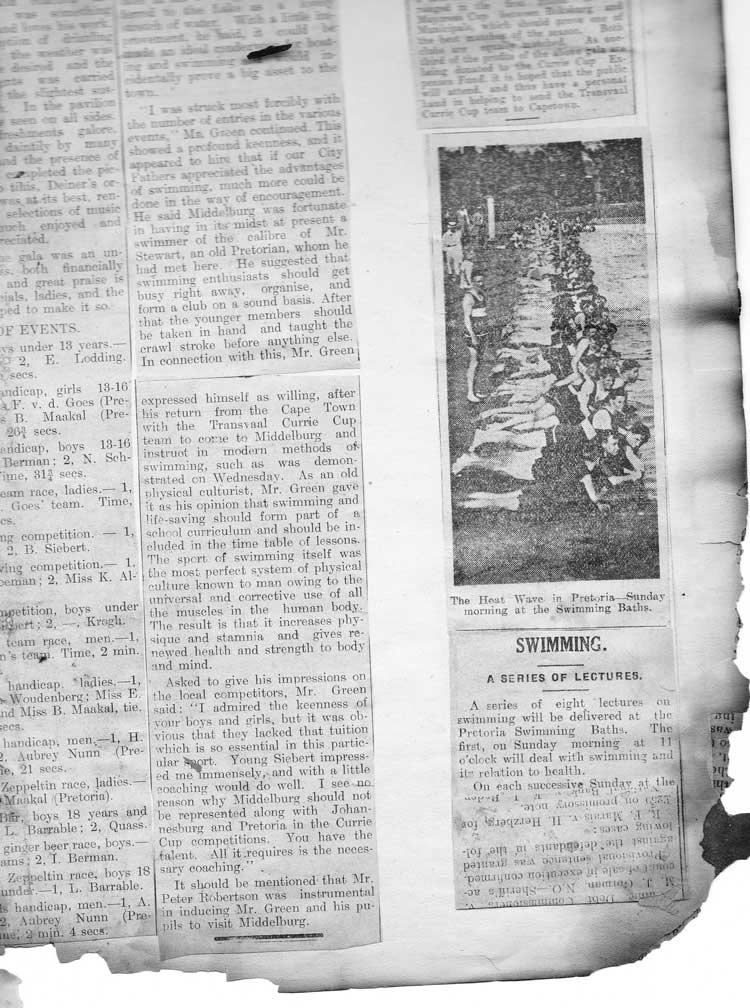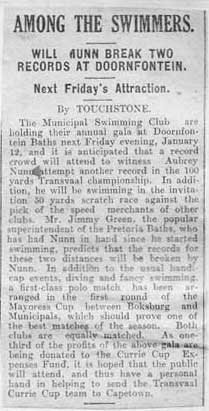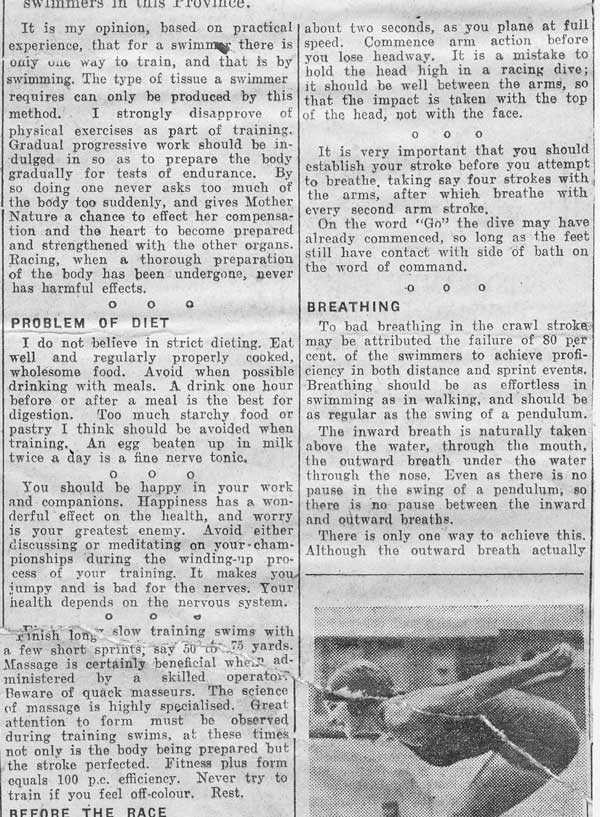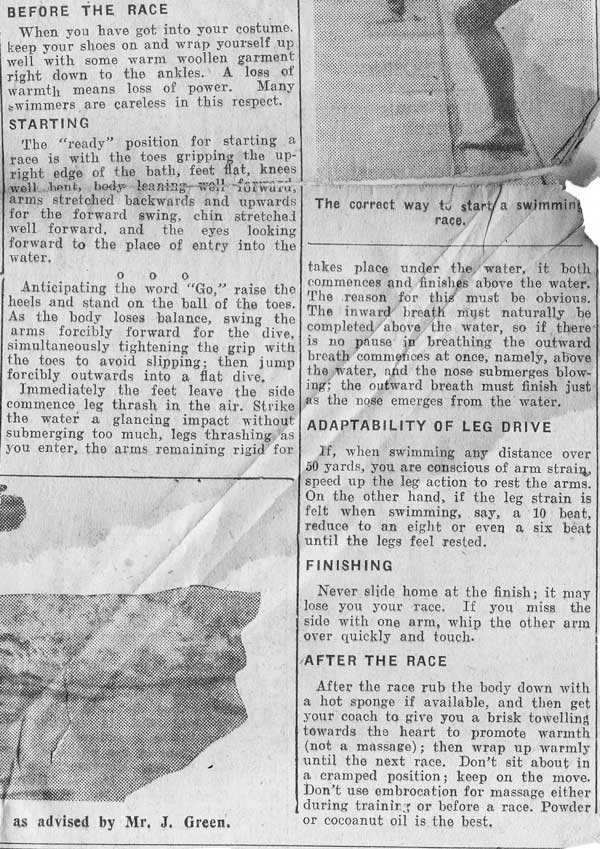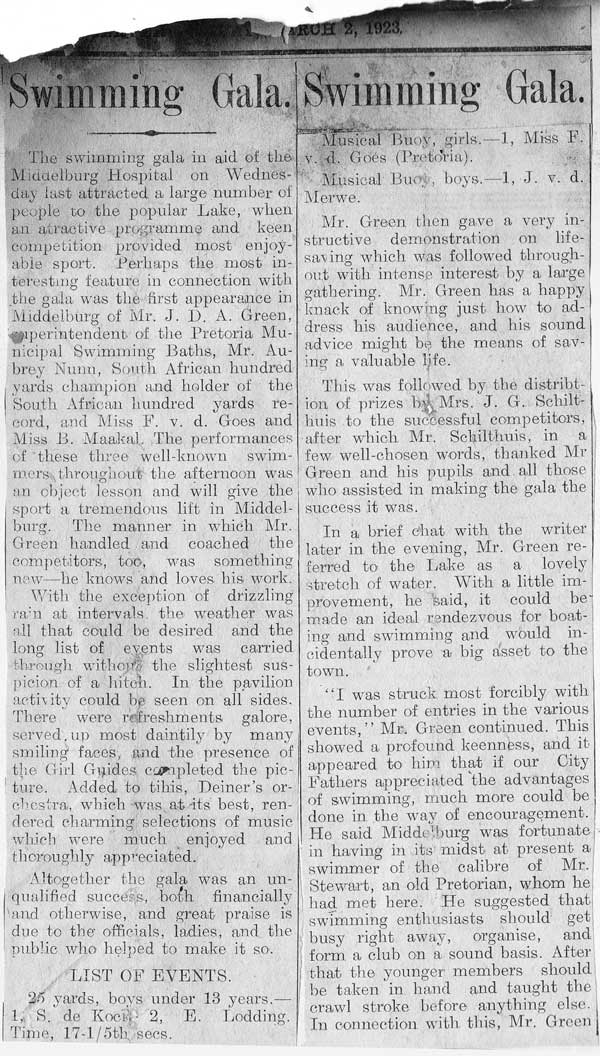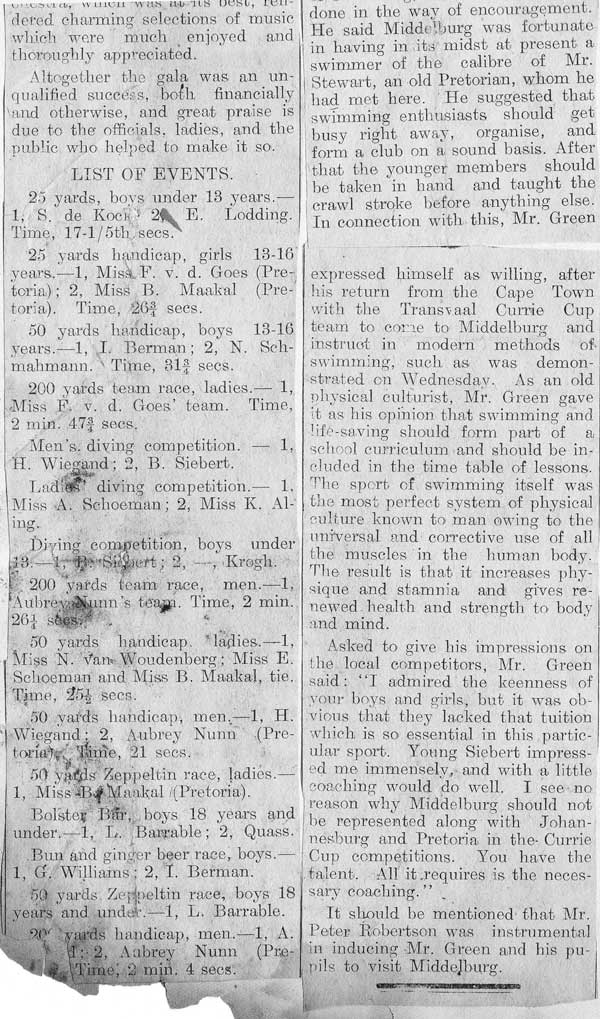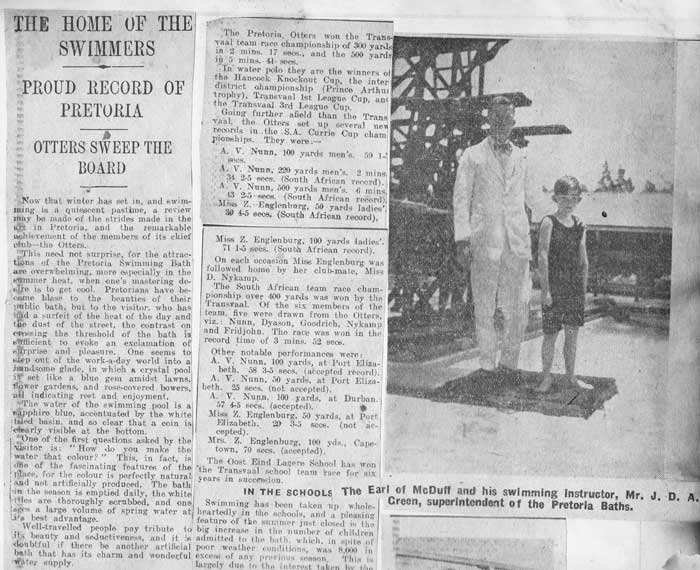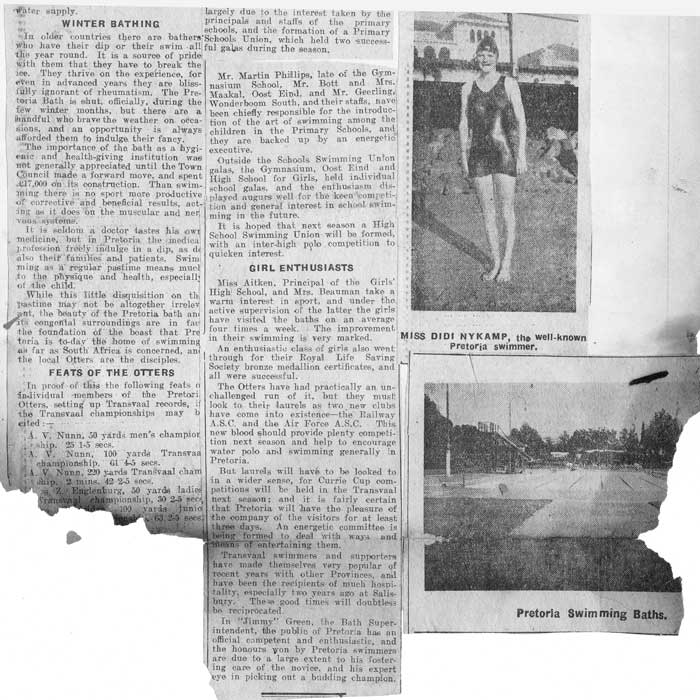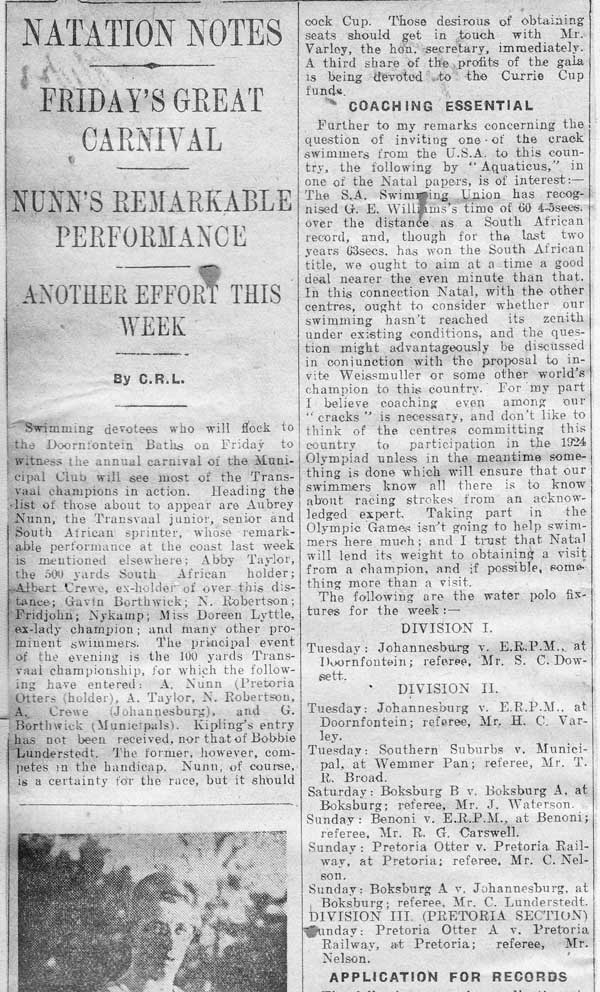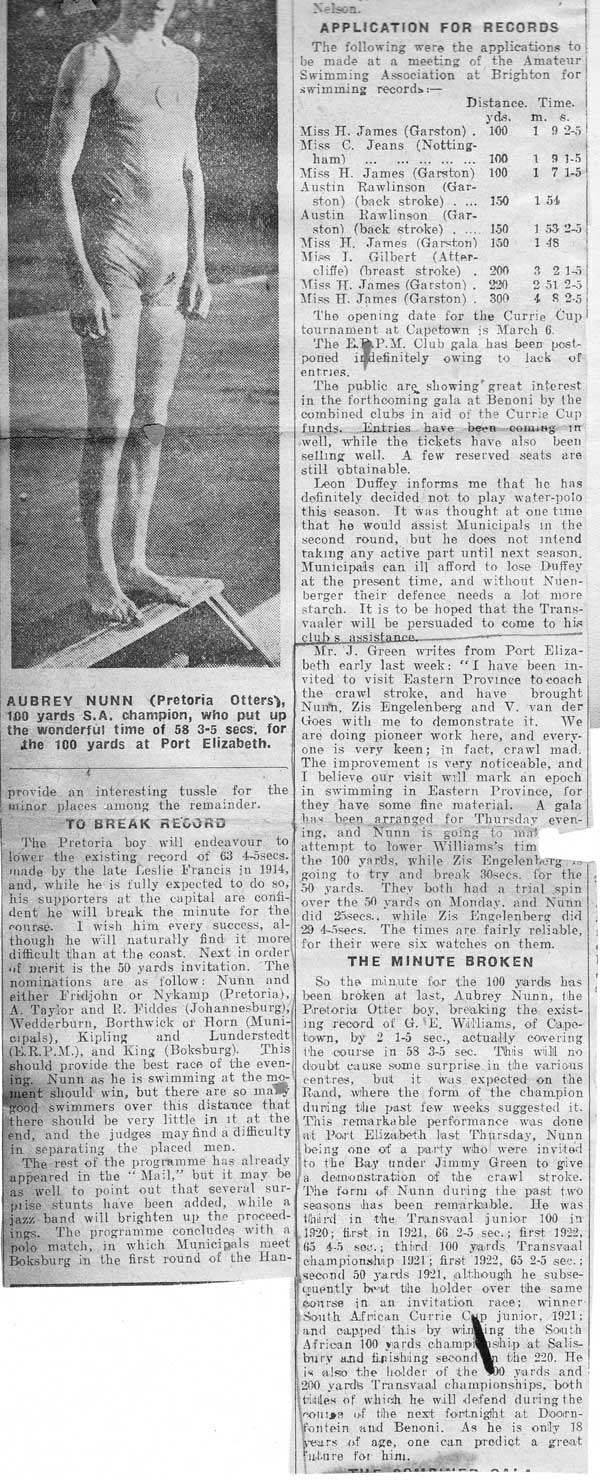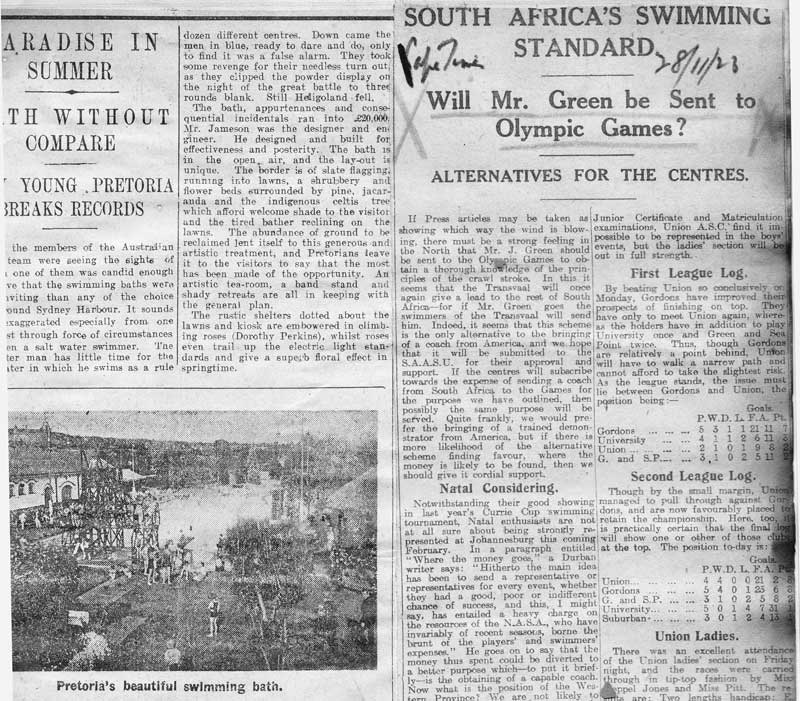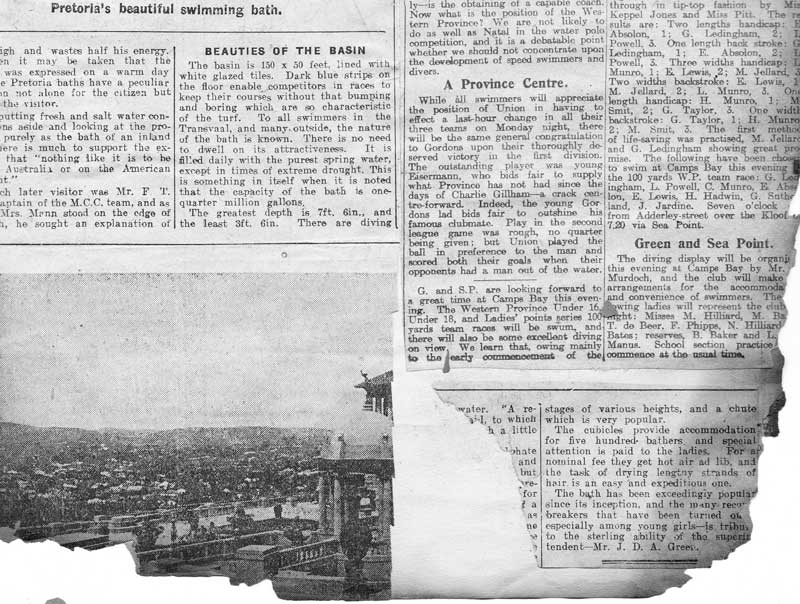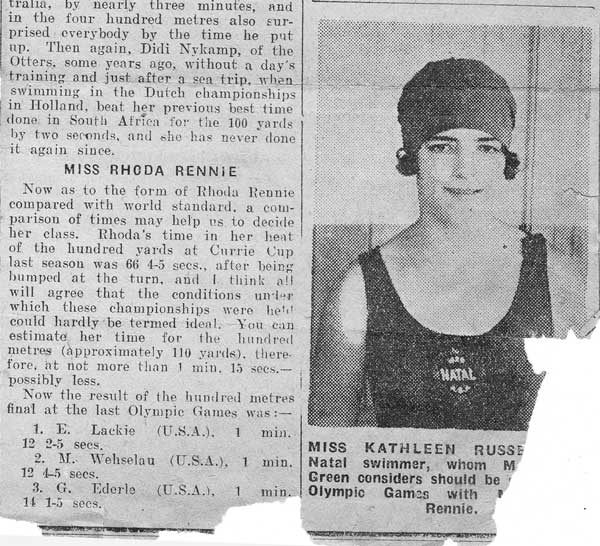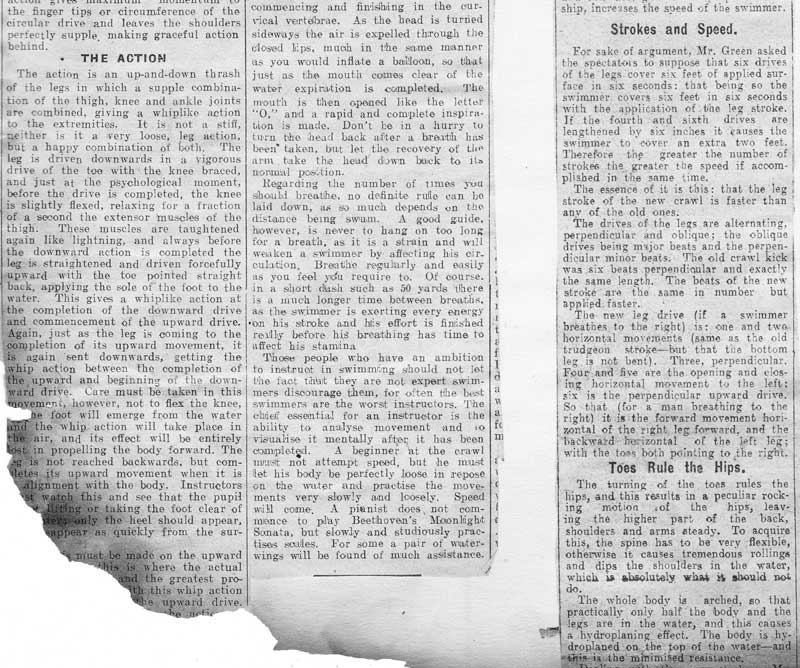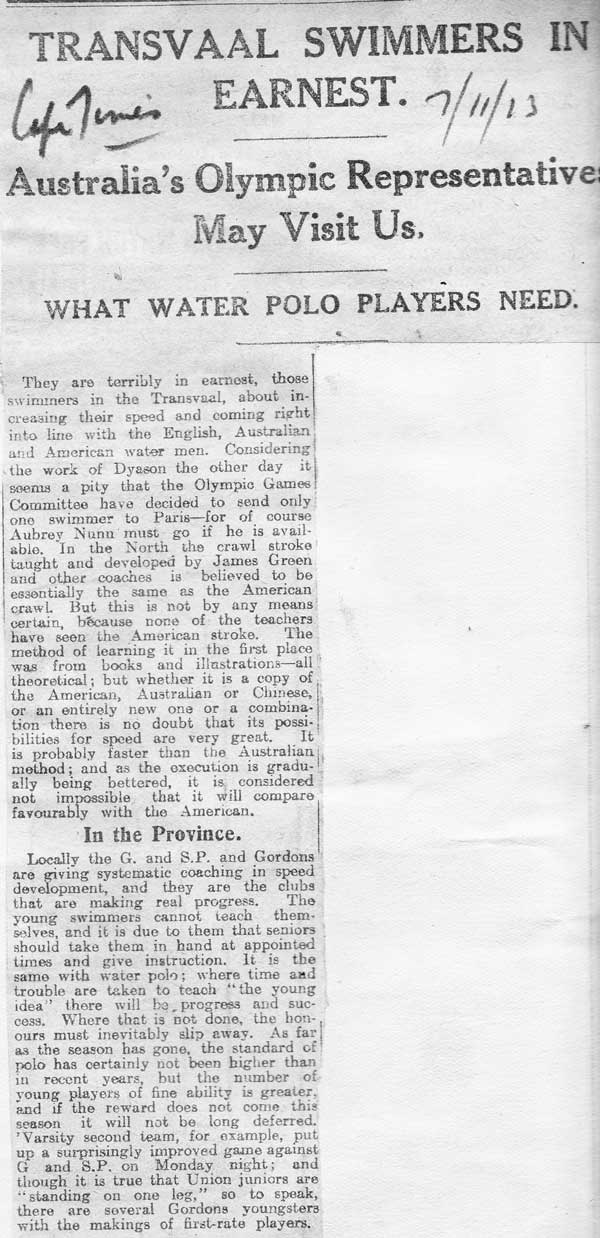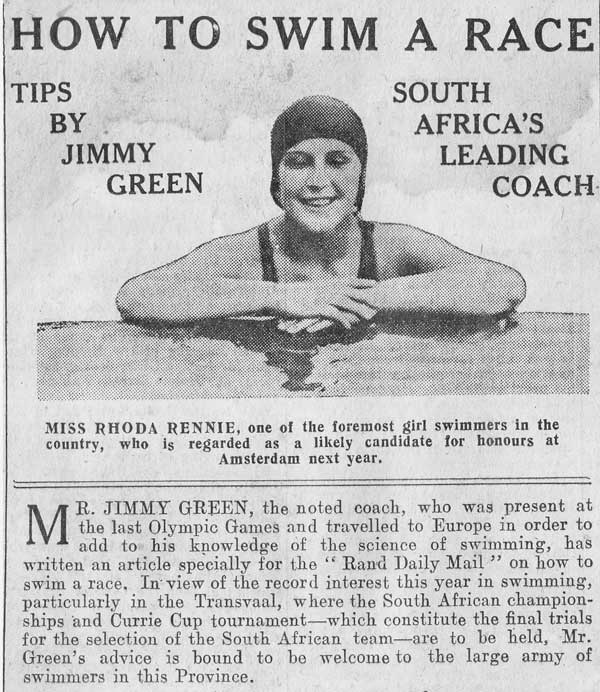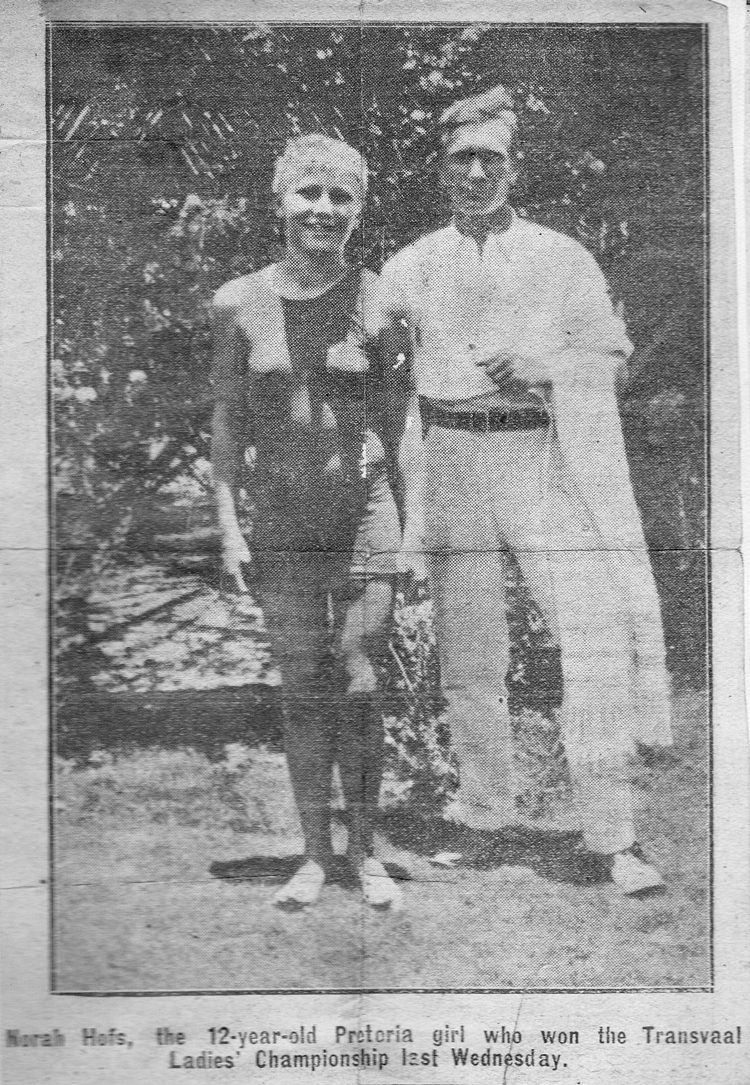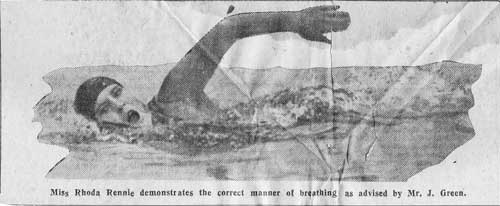Carola van Dam
- Hits: 10
The Cavill family of Australia is known for its significant contributions to the development of the sport of swimming.
Ernest Cavill was the eldest son of Frederick Cavill and was part of the Cavill Family from Australia that was collectively inducted as Honour Swimmers in 1967 in the International Marathon Swimming Hall of Fame and in the International Swimming Hall of Fame.
'Ernie Cavill' set a world record for the 1000-yard freestyle and won a "World Title" series against American champion McCusker in England. In 1888, he set the 1000-yard freestyle world record with a time of 14 minutes, 41 seconds.
The Cavill Family consists of two generations of six colorful champion swimmers (1897 – 1938) who promoted swimming and set national and regional records including father Frederick Cavill, and sons Ernest Cavill, Charles Cavill, Percy Cavill, Arthur Cavill, Sydney Cavill and Dick Cavill.
January 22, 1898:—Ernest Cavill (champion of Australia and America) leaves London by the Castle line steamer Hawarden Castle for Cape Town to-day (Saturday) with the intention of competing for the championship of South Africa. He is accompanied on his way by Mr. Frank Rhodes.
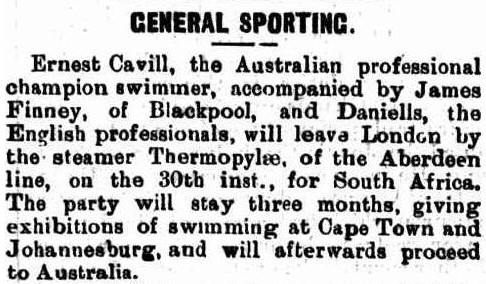
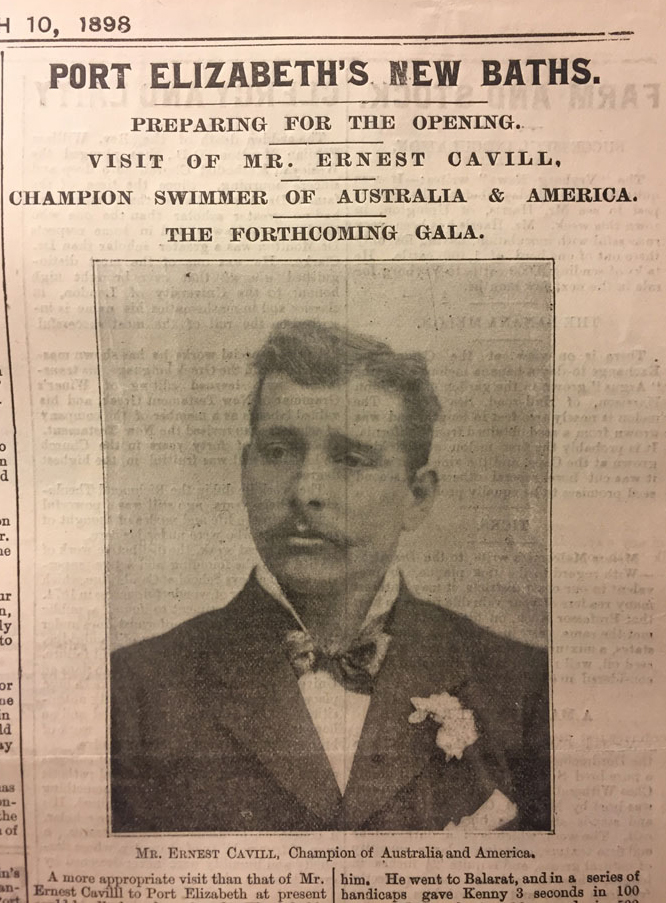
Kalgoorlie Western Argus - 1 February 1900, page 11
After an absence of over two years from Sydney, Percy Cavill, the famous Australasian champion swimmer, has returned to his home, looking taller and heavier than ever, and the picture of rugged health.
The returned champion had visited all parts of Great Britain, spent months in France and Spain, and even went to South Africa, giving exhibitions of his wonderful powers in the water. "I went out to Cape Town, where my eldest brother Ernie, one-time champion of Australia, is doing fairly well, but never engages in matches. He carries too much tissue for..that. I stayed there five months, and was very ' successful in teaching, but could arrange np contests, as none of the.South African nswimmers would hear of a -meeting. My fame had preceded me.
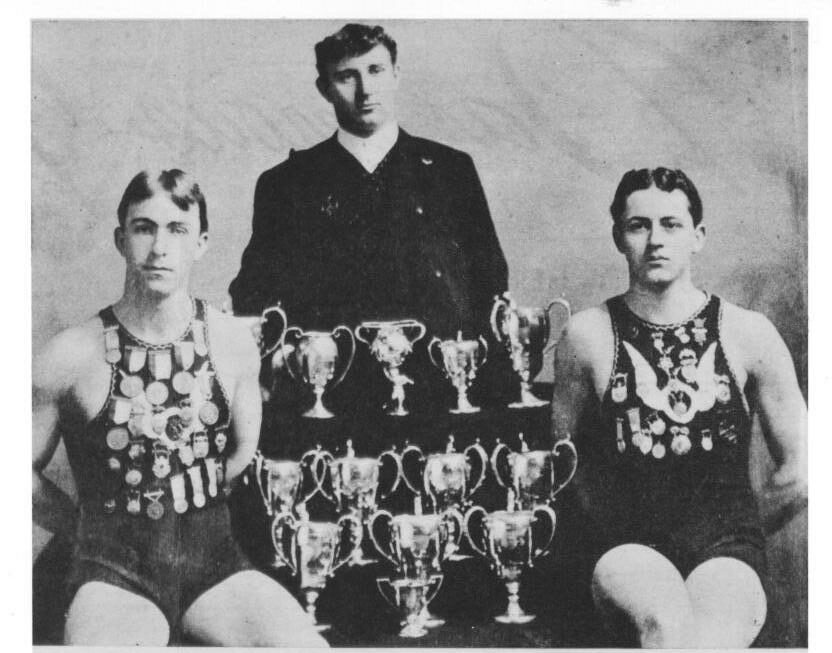
Since the late 19th century, many coaches, administrators and athletes from various aquatic sports disciplines have visited South Africa, and sometimes also visited Rhodesia. On a few occasions, teams from Mozambique also competed in South Africa, although there is little record of these tours remaining visible today.
Due to the international sports boycott of sports in southern Africa that lasted from 1960 - 1990, some tours went unreported. Ongoing research continues to expose information about more of visitors to and from sothern Africa.
1898 - Australian champions, brothers Ernest Cavill and Percy Cavill
1920 - Australians Steadman, Morris and Springfield.
1925 - Hilda James
1929 - English women
1931 - Dutch women
1939 - Australian men
1952 - diver Ann Ross
1956 - coach Bob Kiphuth
1957 - Dutch club zv Robben with coach Jan Stender
1959 - Australians - Devitt, Konrads, Gathercole, Bainbridge
1959 - Judy Grinham
1961 - Australians
1962 - Japanese men
1963 - Dutch women
1965 - Patty Caretto and coach Don Gambril
1966 - Cathy Ferguson and Kiki Caron
1966 - Ilsa Konrads1967 - Canada
1967 - Don Schollander
1968 - coach Dick Smith - US Olympic Diving coach
1968 - Canada
1968 - SV Würzburg
1969 - USA Women
1969 - SA Games
1970 - Australia
1971 - 1980 - Rhodesia
1973 - SA Games
1976 - coach Doc Councilman
1977 - coach Deryk Snelling
1981 - USA and Canada
1982 - Combined Team Canada Germany USA
1983 - Divers
1984 - USA swimmers and divers
1990 - USA divers Joe Greenwell, Megan Meyer, and two others (?)
Various Olympic Coaches like John Harte, Don Gambril, Robert Kiphuth and Deryk Snelling also visited the country.
In 1973 several internationals like Olympic medallists David Wilkie (Great Britain) and Seve Genter (USA) competed in the South African Games. Other international swimmers at the SA Games were J de Brunne, F Monod, S Nieser from Switzerland, world record holder Susan Atwood, A Simmons for the USA, Kurt Steinbach, R Remmel, J Weber, W Kusch, A Kober, F Meeuw, H Gunter-Vesseler, P Nows from West Germany
From 1968 until 1980 South Africa regularly competed against Rhodesia, with many competitors form that country visiting South Africa. A few tours also came from de Sportivo Club in Lorenzo Marques in Mozambique, although never an official team to compete against the Springboks.
In March 1983 a team of school's swimmers from Taiwan visited South Africa.
Ernest Cavill Australian world record holder |
Read more → |
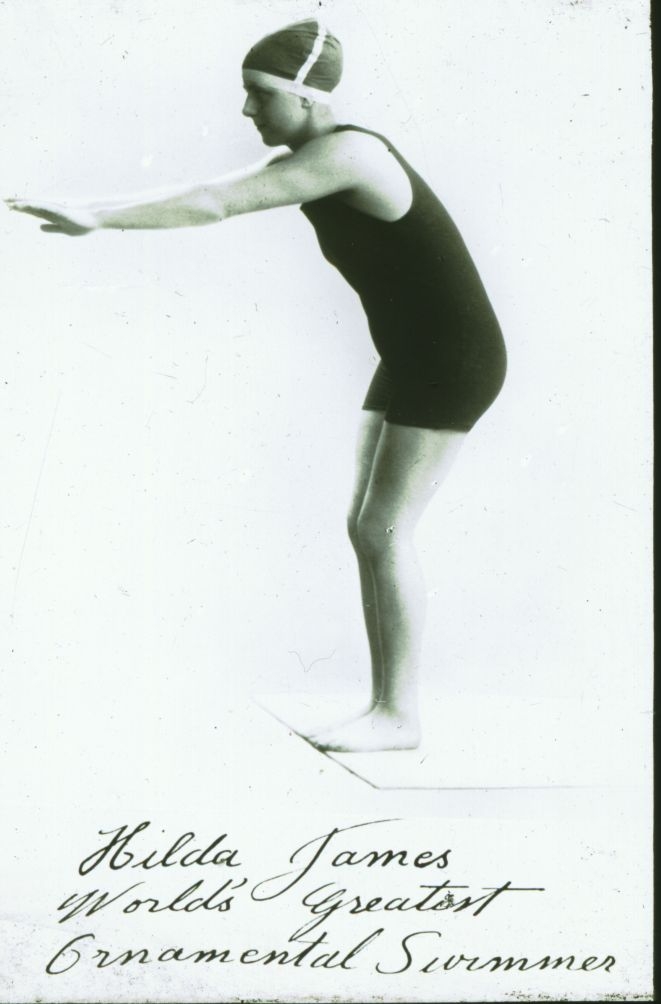
Hilda James set five world records over distances between 220y and 440y freestyle and also broke countless British records. She won the National 100y and 220y titles in 1921 and was a double winner again in 1924 when she won the 220y and the inaugural 440y title She was considered to be one of the best European swimmers at the time, and was also a good synchronized swimmer.
In 1925 Hilda James was invited by the South African Amateur Swimming Union to participate in a demonstration tour and a series of galas to promote swimming in South Africa and Rhodesia.
The tour was initially planned from January 26 to March 20, 1925, but its success led to an extension until May 1 of that year. She celebrated her 21st birthday in Stellenbosch, South Africa, during the extended tour.
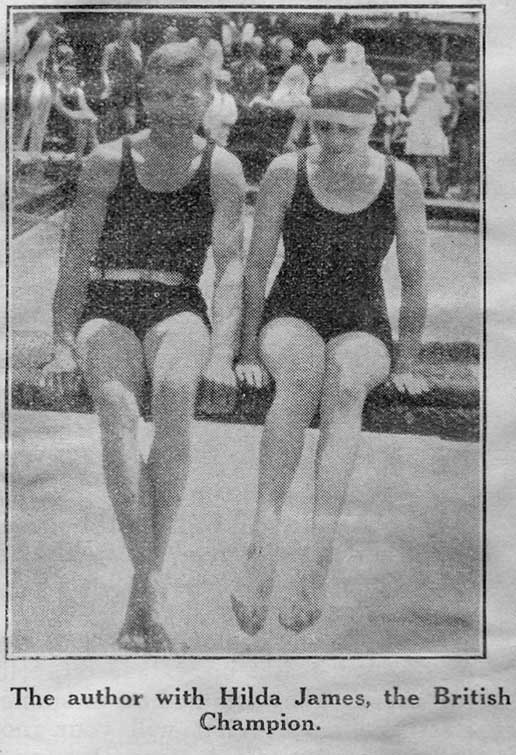
Pretoria swimming coach Jimmy Green, with Hilda James in 1925.


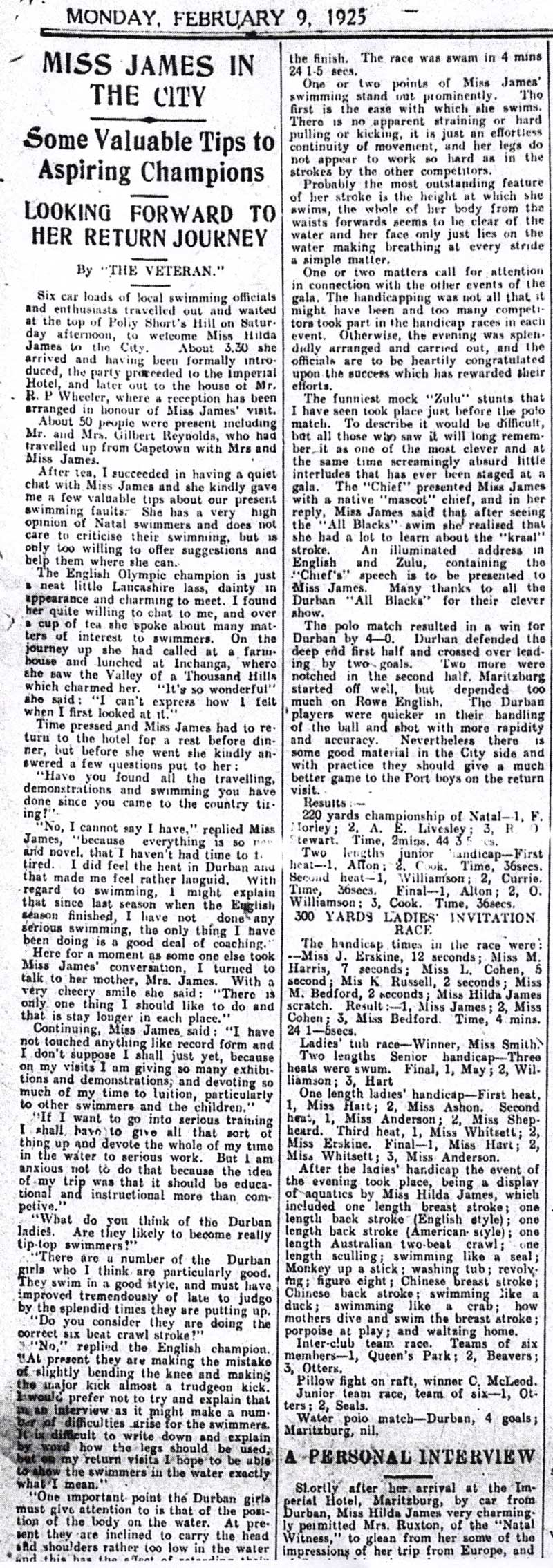
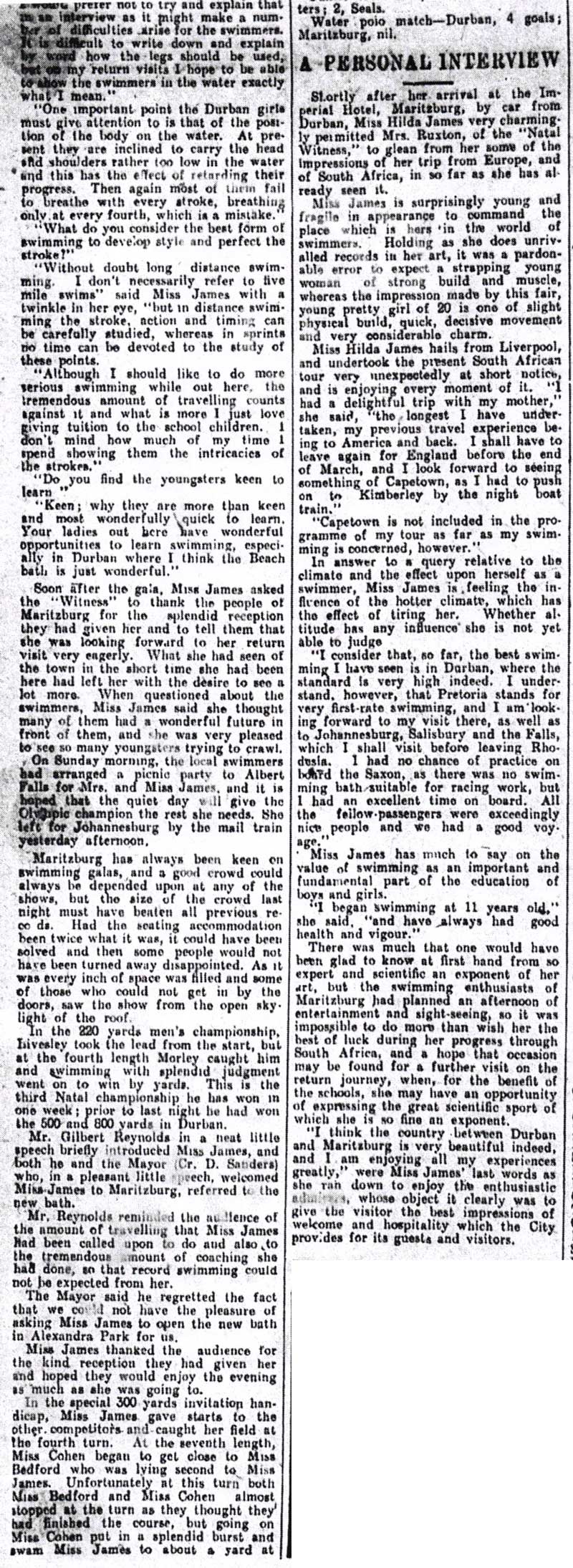

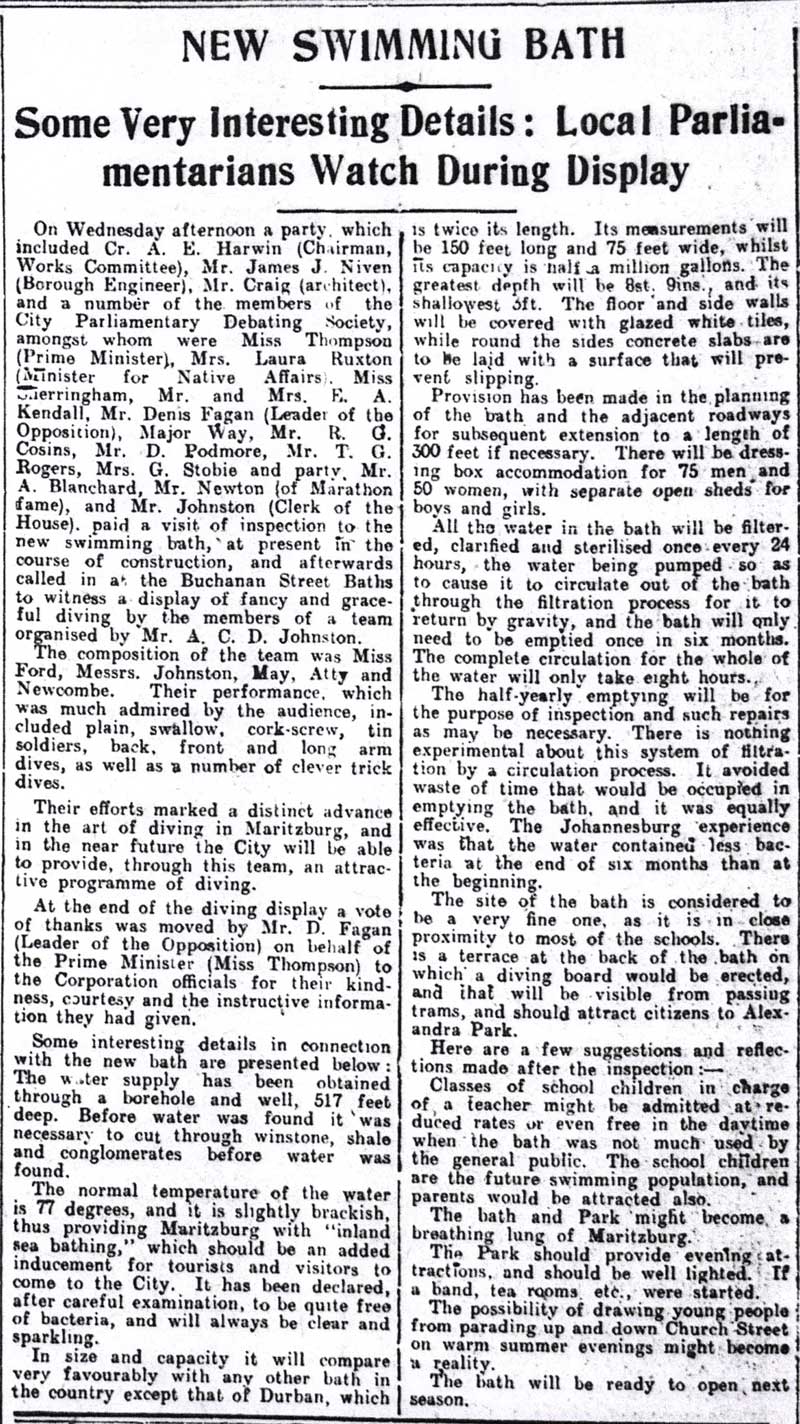


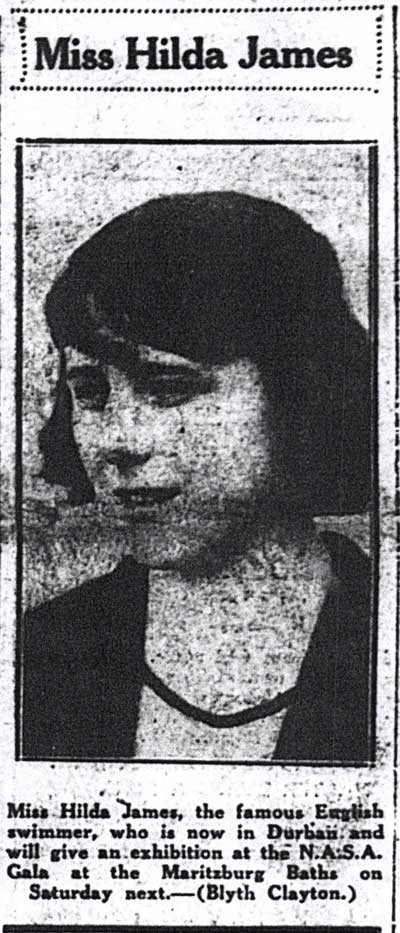




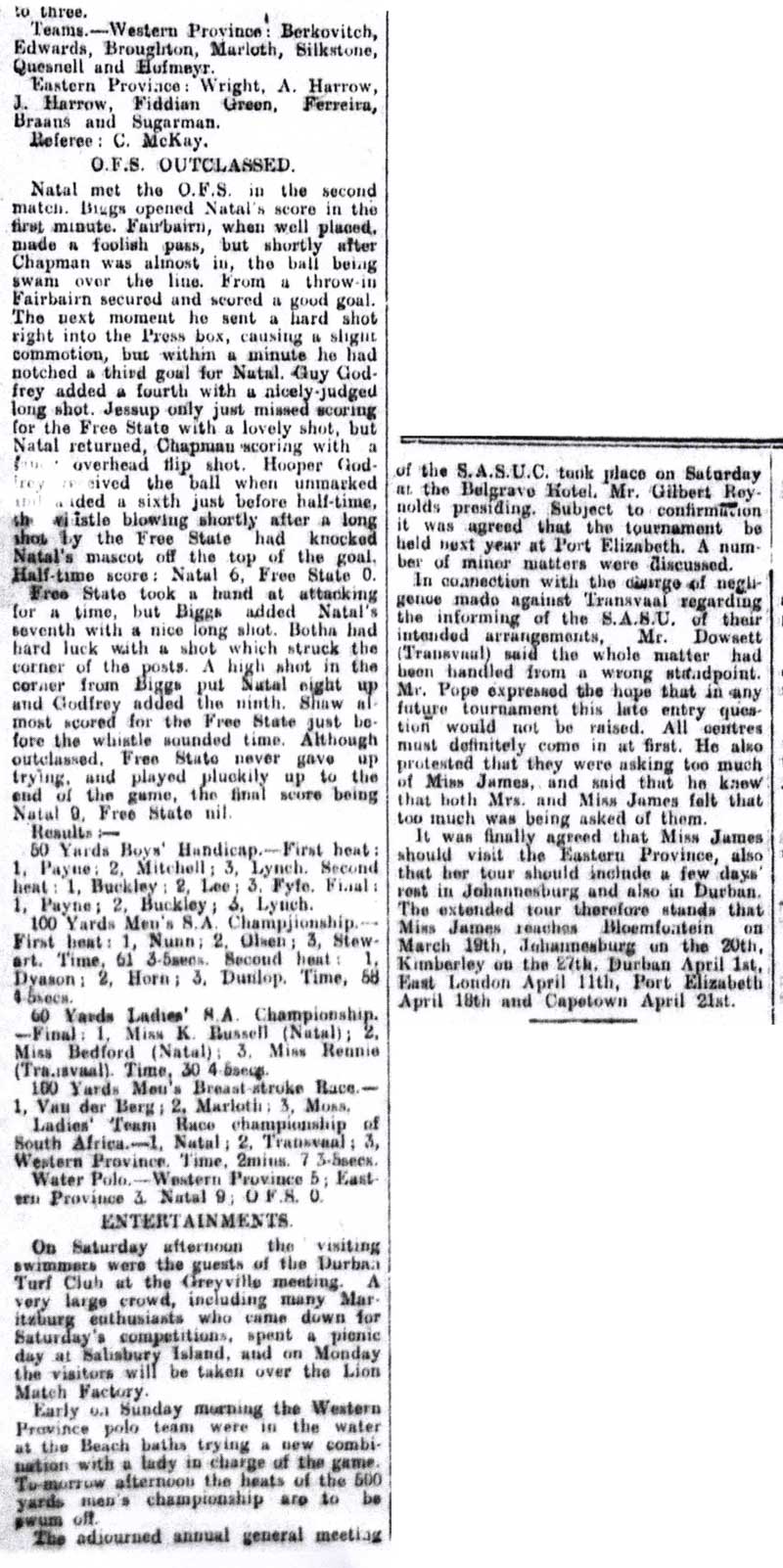


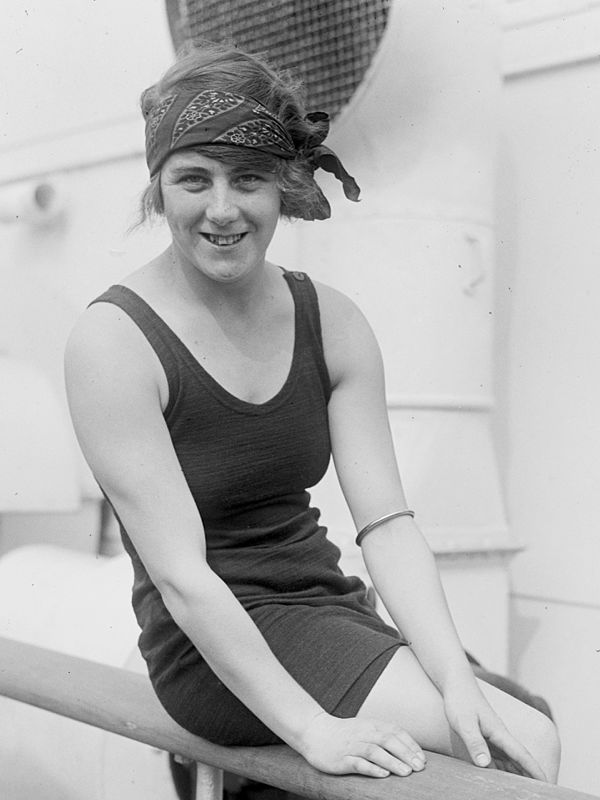
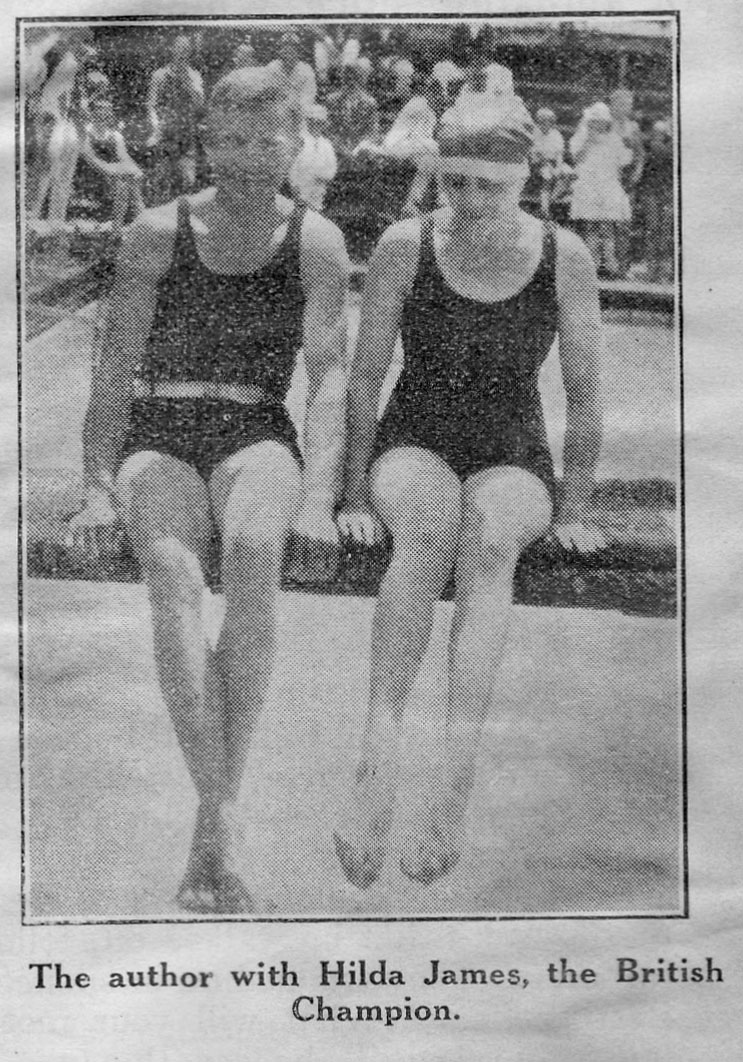
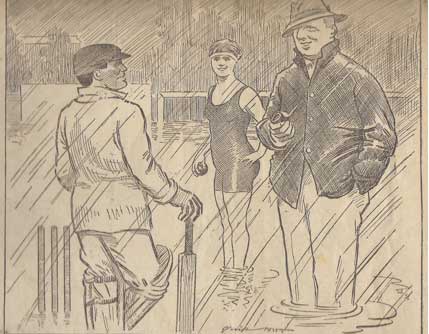
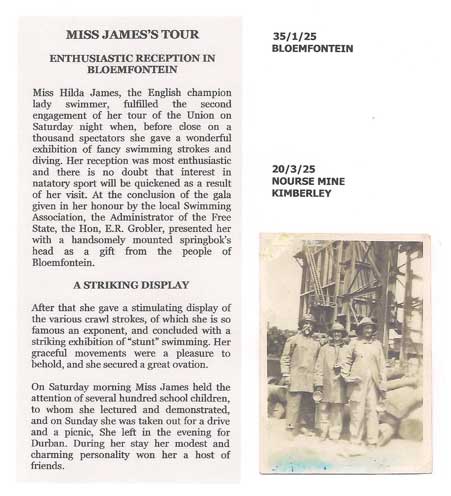

James 'Jimmy' Green was the superintendent at the Pretoria Central Bath and the coach at the Otters ASC. He produced several Springbok swimmers, including 1928 Olympic Bronze medal winners Kathleen Russell, Zus Engelenberg, Freddie van der Goes, and Rhoda Rennie. In 1934, he coached Olympic medallist Jennie Maakal, and in 1938 he was also the coach of the bronze medal-winning women's team at the Empire Games.
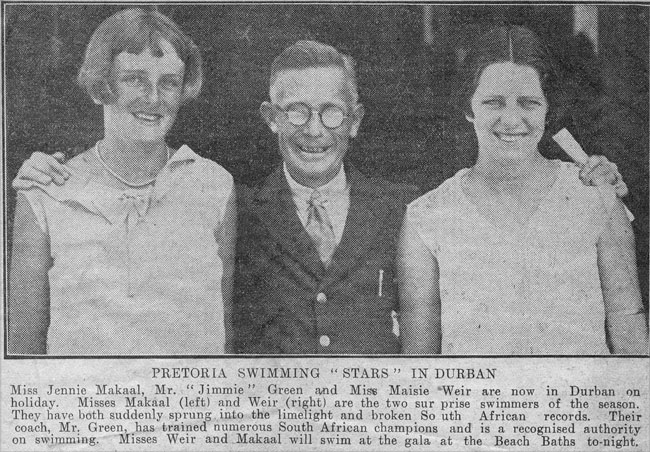
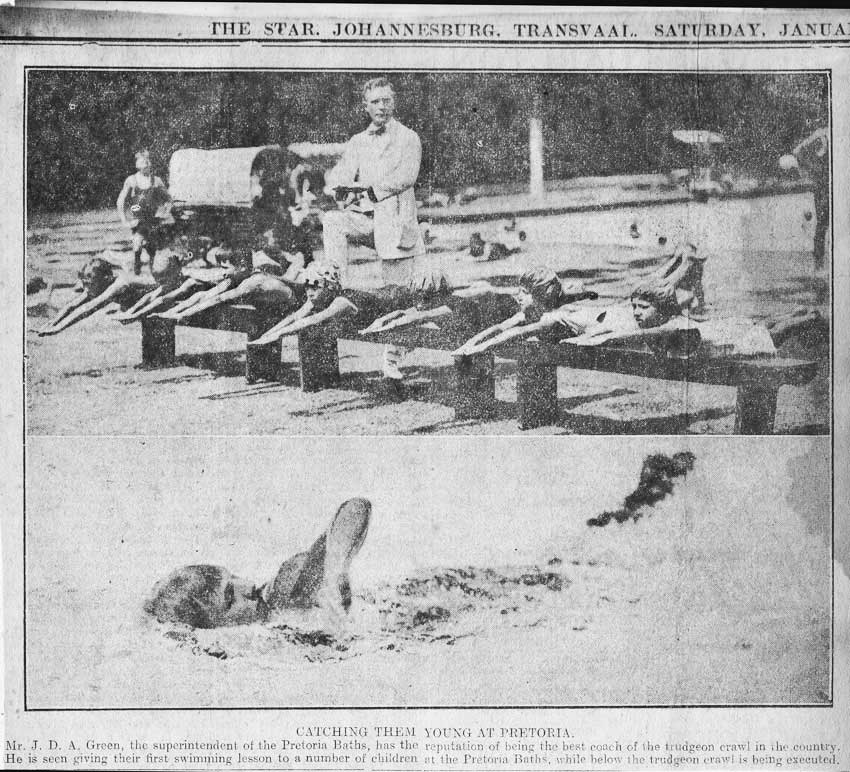
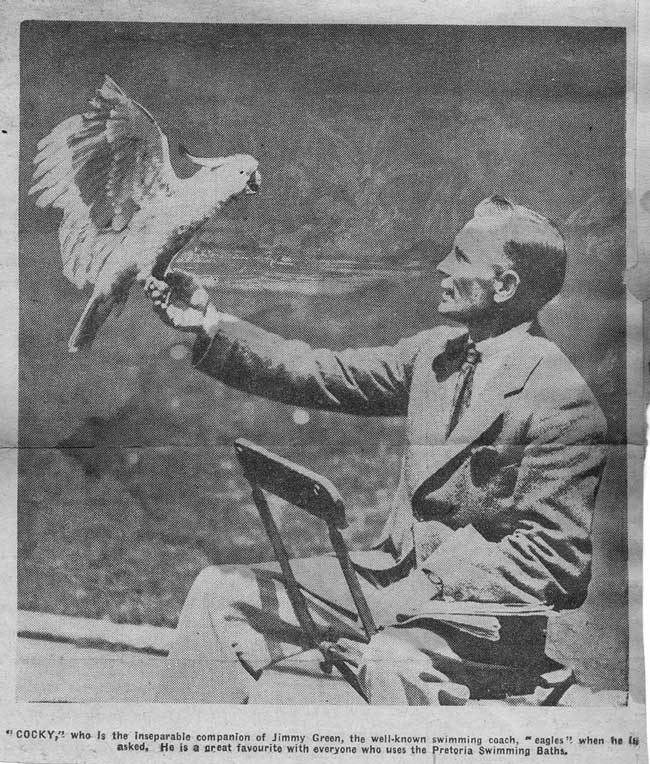

Hilda James was a famous English swimmer who toured South Africa in the 1920s. Read more about Hilda here
